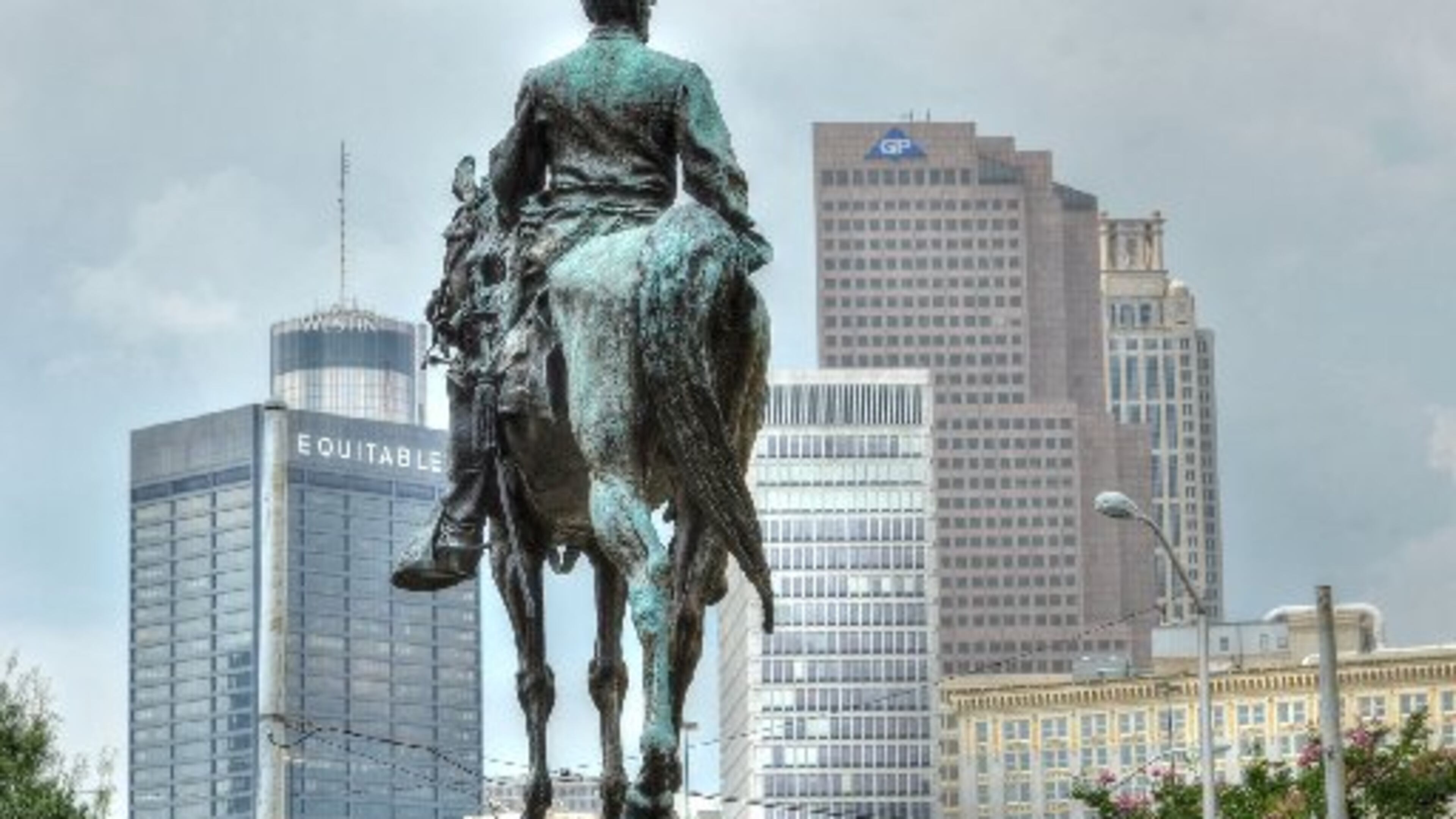Opinion: We’ve been teaching Confederate propaganda, not history

A former high school history teacher turned academic researcher, Wade Morris explains in a guest column how history has been rewritten to enshrine the Confederacy and canonize its leaders.
Morris holds a Dean's Fellowship in Georgia State University's College of Education and Human Development. With GSU professor Chara Bohan, he has published two articles on the depiction of the Civil War in late 19th and early 20th century history textbooks. He is now researching the origins and evolution of report cards in the 19th century.
Morris taught high school history for 15 years in private schools, including the Lovett School in Atlanta. He lives in Buckhead with his wife and three daughters.
By Wade Morris
The shadow of the John B. Gordon statue, Georgia's most famous Confederate general, seemed like a comfortable place to eat my bag lunch. It was the summer of 2018, and I had just begun a fellowship to earn a doctorate from Georgia State University. I am a white Atlantan, born about a decade after the civil rights movement and raised in Buckhead. For the first time, as I approached middle age, I found myself commuting downtown.
Each day, I would ride MARTA from Lindbergh to Five Points, then stroll the few blocks to GSU. Out of curiosity, I started to read about the 1906 Atlanta race riots, a four-day period in which white mobs murdered more than 20 African Americans. It was Atlanta’s Kristallnacht, an orgy of violence on the streets through which I walked, from the MARTA station through GSU and on to the state Capitol, where I sat to eat my lunch.
For my fellowship, I began researching Southern history textbooks from the late 19th century through the mid-20th century. These textbooks are filled with the racist tropes of both the childlike "negro" and the inherently violent black man. The Gordon statue, the 1906 race riots, the Southern history textbooks: I was intellectually submerged into the white supremacy of the Jim Crow South.

The Gordon statue was dedicated in May 1907, eight months after the race riots. Gordon faces northwest, toward the black neighborhood where two dozen African Americans were murdered.
According to a Winthrop University poll, 80% of white Southerners support maintaining these Confederate statues. Beneath the shade of the statue and with my peanut butter and jelly sandwich in hand, I hypothesized that Lost Cause textbooks might be one key to understanding the continued support for romanticizing the Civil War among Southern whites still today.
My professor and I then wrote an academic article that narrowly focused on the depiction of Gen. Gordon in local Georgia history textbooks. We used a method that academics call “content analysis,” which essentially means counting the number of words that textbook authors used to describe Gordon’s wartime actions in relation to other topics.
We found that textbooks increasingly valorized Gordon’s wartime record, just as racial unrest increased in Atlanta. The data shows the peak emphasis on Gordon’s military career came in a textbook published in 1913, in the decade after the construction of the Gordon memorial. For the next 50 years, Gordon remained a feature of Georgia’s history textbooks, all the way until 1968.
In the early and mid-20th century, white Southerners filled not only public spaces like the state Capitol but also classrooms with a romanticized depiction of Confederate heroes.
On Friday, April 26, 2019, Georgia Gov. Brian Kemp signed legislation that bans local governments from removing Confederate memorials. Kemp signed the law 112 years after the state government unveiled the Gordon memorial.
During those 112 years, the Statehouse grounds became a shrine to the Lost Cause, memorializing the Confederacy’s vice president, the Confederacy’s secretary of state, Georgia’s two Confederate senators and governor, five more Confederate generals in addition to Gordon, a Confederate colonel, a Confederate major, a Confederate naval commander, and even a Confederate lieutenant.
Gov. Kemp and the millions of white Southerners who defend Confederate monuments have inherited a century’s worth of propaganda and not just in the form of public statues. White Southerners studied a version of the Civil War that all but ignored the experiences of the enslaved and that glorified the actions of men like John B. Gordon. Changing that mindset, a deeply held set of beliefs that transcends generations, will not be easy.
I have not slept much this past week as white and black Atlantans rise up against police brutality, voter disenfranchisement, and increasing disparities of wealth that correlates with race. I have been thinking a lot about the force of history, how my own life has been shaped by the legacy of Jim Crow and the unfinished business of the civil rights movement.
I have been asking myself about my own responsibility in all of this, what, specifically, I should do to help. Removing statues like John B. Gordon’s would be a mere gesture at this moment, but gestures matter. It is time for white Atlantans to accept our history for what it is, to take down these statues, and to dedicate ourselves to creating a more just and equitable city.

